Toyota Tundra Vs Ram 1500: Which Pickup is Right for You?

There’s no shortage of choice when it comes to half-ton pickups.
Today’s shopper is wading hip-deep through options with diesel, gasoline, electric and hybrid power– and new tech, hardware and safety equipment is rapidly arriving on scene as competition fiercens and shoppers look to 4×4 vehicles to get out and explore the world around them.
Get a Quote on a New Toyota Tundra or Ram 1500Below, we’ll compare one of the market’s most proven pickups with one of its newest. It’s the new-for-2022 Toyota Tundra versus the Ram 1500, examined under our microscope to help you make a smarter purchase decision.
Cabin Space
Toyota Tundra: There’s not a lot separating these two trucks on cabin space up front, with tenths of an inch giving the Tundra the lead for front headroom and legroom.
Ram 1500: It’s the wider RAM with superior figures for front and rear shoulder room, as well as rear-seat headroom by a fair margin.
Bottom Line: Both models can be specified in various cab and bed configurations, with the Tundra offering Double Cab and Crewmax configurations, and the RAM offering Crew Cab and Quad Cab models.
On rear-seat legroom, Toyota’s Tundra Crewmax configuration serves up 41.6 inches, with the Ram 1500 Crew Cab offering 45.2.
Key differences on cabin space are more apparent in the rear seats, where the RAM 1500 will feel more spacious and accommodating—ideal for drivers who frequently travel with a truck full of adult passengers.
Cargo Space and Towing
Toyota Tundra: Toyota offers the 2022 Tundra in both standard and long-bed configurations, with maximum towing capacity of 12,000 lbs. on properly equipped models. The Tundra’s fuel tank has a capacity of 22.5 gallons on SR and SR5 models, with a 32.2 gallon tank available on SR5 and standard on Limited and higher trim grades.
SEE ALSO: 2022 Toyota Tundra First Drive Review: All Grown Up and Somewhere to TowMaximum payload is 1,940 lbs.
RAM 1500: The RAM 1500 is available in both short and long bed options, with maximum towing capacity rated at 12,700 lbs when properly equipped. Fuel tank sizes are 26 or 33 gallons, depending on the model selected.
Note the RAM 1500’s available RAMBOX system, which fits compartments to the sides of the truck’s box, adding lockable and drainable storage and additional flexibility.
Maximum payload is 2,300 lbs.
Bottom Line: The RAM 1500 takes the lead in payload, but little separates these two pickups when it comes to maximum towing capacity or highway cruising range.
Powertrains
Toyota Tundra: The Toyota Tundra’s all-new V6 engine is a 3.5 litre twin-turbo V6, good for 348 horsepower and 405 lb.-ft of torque on the SR trim grade, 389 horsepower and 479 lb.-ft of torque on all other trim grades, and up to 437 horsepower and 583 lb.-ft of torque when drivers tick the box on the optional I-FORCE MAX hybrid version of this engine.
The power-boosting hybrid system in the Tundra self-generates all required electricity on board, with no need to plug in. With hybrid power, expect a slight boost to fuel efficiency, and a major boost to performance.
The Tundra uses a 10-speed automatic transmission, and both two and four-wheel drive are available.
RAM 1500: RAM 1500 shoppers can choose from V6 or V8 gasoline options with the efficiency-boosting eTorque system, as well as a 3-litre turbodiesel V6. With 5.7 litre HEMI V8, look for 395 horsepower and 410 lb.-ft of torque, as well as improved throttle response from models equipped with the eTorque system. The RAM 1500’s Pentastar V6 delivers 305 horsepower and 269 lb.-ft of torque.
With optionally-available diesel power, RAM 1500 drivers get less stops for refuelling, alongside 260 horsepower and 480 lb.-ft of torque—70 more than the HEMI V8!
Both two and four-wheel drive models are available, and the RAM 1500 uses an 8-speed automatic transmission. Both the RAM 1500’s gasoline HEMI V8 and Pentastar V6 engines are some of the most proven and mass-produced powerplants on the road today.
Bottom Line: The RAM 1500 leads the pair for powertrain selection with available diesel engine, and shoppers may take added confidence in its well-proven engine lineup. The Tundra leads the way with the highest available output figures, and maximum torque that leaves the RAM 1500 in the dust.
Fuel Economy
Toyota Tundra: Where 4×2 models are concerned, the Tundra’s gets 18 mpg in the city, 24 mpg on the highway and 20 mpg combined, with the lower-output engine tune in SR trim grades. With the more powerful engine tune used for all other trim grades, the Tundra 4×2 achieves 18 mpg in the city, 23 on the highway, and 20 combined.
With 4×4, it’s 17 mpg in the city, 22 mpg on the highway (make that 23 mpg on SR and SR5 grades), and 19 mpg overall.
Opting for the hybrid engine, dubbed i-FORCE MAX, makes a slight improvement to fuel efficiency, and a much larger improvement to torque output.
RAM 1500: With V6 power, the RAM 1500 achieves 20 MPG in the city, 25 on the highway, and 22 combined. With HEMI V8, it’s a thirstier 17 mpg in the city, 23 mpg on the highway, and 19 mpg combined.
SEE ALSO: 2021 Ram 1500 TRX Review: First DriveThe available diesel engine makes it 23 in the city, 33 on the highway, and 26 combined—representing the best fuel economy on the page.
Bottom Line: Toyota’s hybrid tech lets shoppers make better use of their fuel dollars by turning in a significant torque advantage with no hit to your fuel bill—though it’s the RAM 1500 EcoDiesel as the best choice for shoppers after minimized consumption.
Safety
Toyota Tundra: Thanks to its standard Toyota Safety Sense 2.5 system, the Tundra’s standard safety feature list includes high-end items like Pre-Collision System with advanced pedestrian and cyclist detection, radar cruise control, Lane Tracing Assist, Automatic High Beams, Road Sign Assist, and plenty more.
RAM 1500: The RAM 1500 packs an impressive list of advanced safety features, including Blind Spot Monitoring, Forward Collision Mitigation, Lane Departure Warning and parking sensor system, but the best of the RAM 1500’s safety features are typically optional, and / or reserved for higher-end models.
Bottom Line: Both trucks have an impressive array of safety equipment, but the Tundra makes it easier for shoppers to know they’re backed by the latest and greatest features, since they’re all standard.
STYLING
Toyota Tundra: The latest Toyota Tundra’s looks are big, bold and attention grabbing. The strong hexagonal grille and clean-cut lines convey a sense of precision in the Tundra’s fascia, with different trim grades separated by specific arrangements of colour, gloss, and texture to set them apart. The integrated look to the Tundra’s taillamps, tailgate and spoiler adds an athletic flair, too.
RAM 1500: The RAM 1500’s signature look is available in configurations from racy to high-end, thanks to the widespread use of grade-specific colors, accents, grilles, and more. The RAM 1500 looks more familiar on the road, thanks to its use of long-proven design elements and prominent branding and badging. Still, the overall look is softer and gentler than the highly-chiseled Tundra.
Bottom Line: Shoppers after a fresh and athletic new face and sharp, tailored body lines will likely gravitate towards the Tunda, while those after a more refined and upscale look might well prefer the RAM 1500 instead.
PRICING / VALUE
Toyota Tundra: The starting ask for a 2022 Toyota Tundra is $35,950 for the SR grade, $40,755 for the high-value SR5, $46,850 for the luxurious Limited, and $56,990 for the Platinum. For added exclusivity, the 1794 Edition opens the bidding at $57,690.
The off-road enhanced TRD Pro model features additional capabilities, and comes priced from $66,805. The range-topping Capstone edition rings in at $73,530.
RAM 1500: The RAM 1500 starts at $35,900 in Tradesman trim with 4×2, and $39,400 with 4×4. Where mainstream RAM 1500 models are concerned, 6 additional grades are available, including the Big Horn (from $40,995), Rebel (from $50,395) and Limited (from $61,695).
Bottom Line: Both the Tundra and RAM 1500 are available in a wide variety of configurations from basic work truck to hard-working commuter to luxurious towing rig.
In Conclusion
There’s little separating the Ram 1500 and Toyota Tundra on fuel economy, capability and styling prowess—though shoppers after a more spacious rear-seat experience and a more time-tested platform and powertrain will tend to gravitate towards the RAM 1500—though the Tundra’s available torque-monster hybrid engine and more advanced safety feature suite will attract shoppers after the latest in high-tech.
My choice, after hundreds of miles of real-world testing both machines? The Tundra. I’m a big fan of the RAM 1500’s proven bones, though I found the Tundra’s ride, handling, infotainment system and powertrain refinement added a stronger sense of value for the dollar.
Become an AutoGuide insider. Get the latest from the automotive world first by subscribing to our newsletter here.

Justin Pritchard, an award-winning automotive journalist based in Sudbury, Ontario, is known for his comprehensive automotive reviews and discoveries. As a presenter, photographer, videographer, and technical writer, Justin shares his insights weekly through various Canadian television programs, print, and online publications. In 2023, Justin celebrated a significant milestone, airing the 600th episode of his TV program, AutoPilot. Currently, he contributes to autoTRADER.ca, Sharp Magazine, and MoneySense Magazine. His work as a technical writer, videographer, presenter, and producer has been recognized with numerous awards, including the 2019 AJAC Video Journalism Award and the 2018 AJAC Journalist of the Year. Justin holds a Bachelor of Commerce (Hons) from Laurentian University, which he earned in 2005. His career in automotive journalism began that same year at Auto123.com. Since then, he has written one of the largest collections of used car buyer guides on the internet. His passion for photography, nurtured from a young age, is evident in his work, capturing the scenic beauty of Northern Ontario. Living in a region with a particularly harsh winter climate has made Justin an expert on winter driving, winter tires, and extreme-weather safety. Justin’s significant achievements include: 2019 AJAC Video Journalism Award (Winner) 2019 AJAC Road Safety Journalism Award (Runner-Up) 2019 AJAC Automotive Writing (vehicle review topics) (Winner) 2019 AJAC Automotive Writing (technical topics) (Winner) 2018 AJAC Journalist of the Year You can follow Justin’s work on Instagram @mr2pritch and YouTube @JustinPritchard.
More by Justin Pritchard



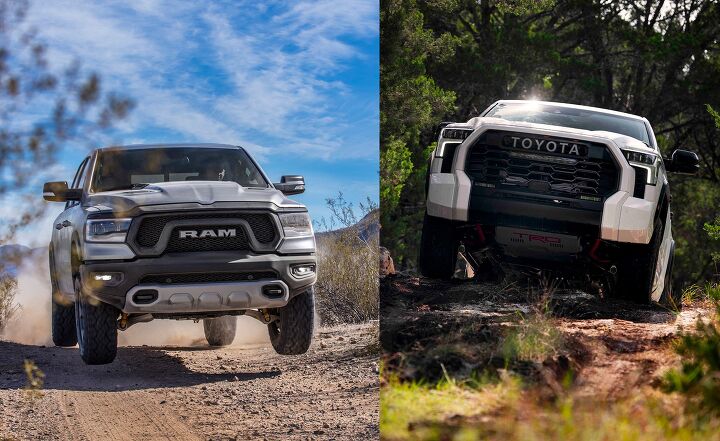
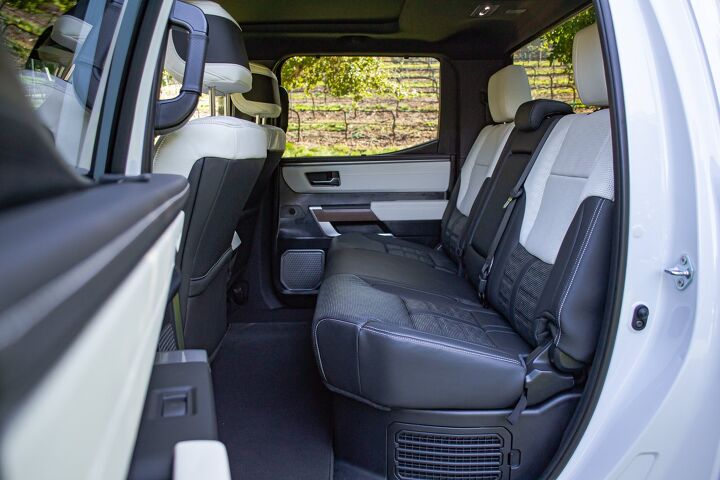








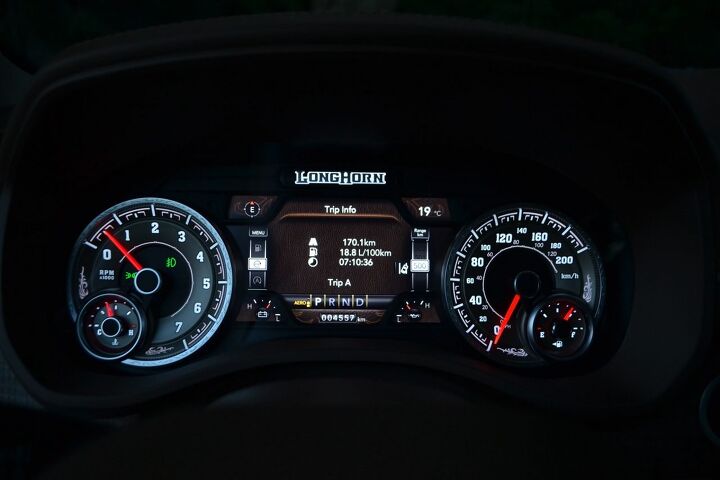

















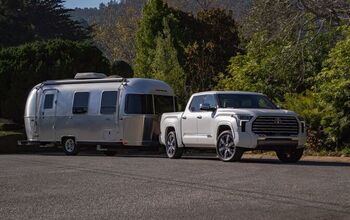



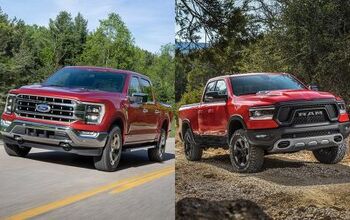


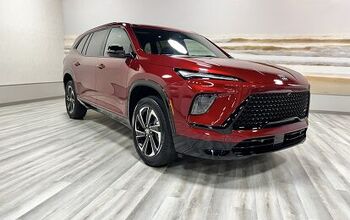





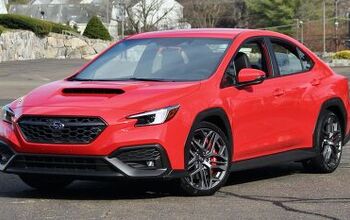
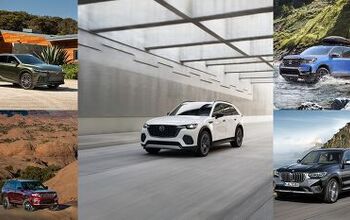
Comments
Join the conversation
Thank you for the information. What would be better for all-terrain trip to South America?
The article doesn't include the RAM TRX which I suspect crushes the Tundras in performance. The article also falls far short with regards to communicating crash safety in that no comparison of NHTSA 5 Star / SaferCar.gov tests, IIHS crash tests, or the most important InformedForLife.org rating are even mentioned!